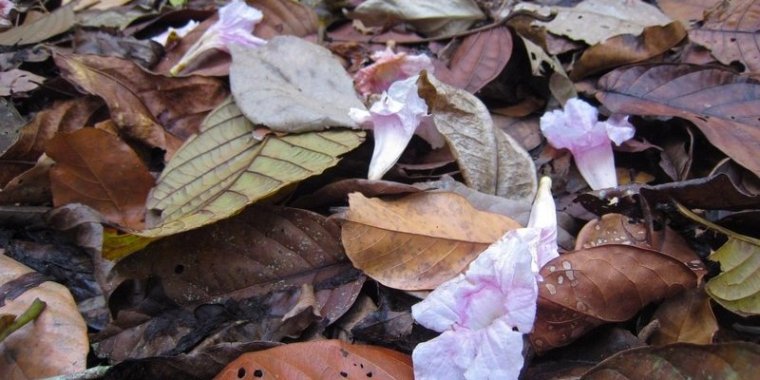| News / Science News |
From tropical to boreal ecosystems, temperature drives functioning
University of Arizona scientists trekked across the Americas: from moist, tropical jungles of Panama to the frigid boreal forests of Colorado to the wet temperate forests of the Pacific Northwest. They collected soil samples, enveloped trees in belts to measure growth on a fine scale and planted sensors that continue to collect data on soil moisture and temperature, which varies widely in forests.

Tabebuia flowers and leaves in Panama. Researchers saw gene shifts across sites. Photo: Brian Enquist
By measuring and comparing diverse species to understand how they function in their environment across a range of temperatures, the scientists found that temperature drives shifts in the plants and microbes that influence ecosystems.
"The work represents an unprecedented monitoring of soils and forests from hot tropical forests to cold boreal forests and fills important gaps in our understanding of how organisms in different levels of an ecosystem's food chain are linked via temperature," ecologist Brian Enquist said. "The research involved field work in remote locations, lab work associated with analyzing soil microbial DNA and computer analyses using large datasets."
Bacteria in certain communities have genes tailored by evolution for cycling the nutrients that are naturally available in their ecosystems. The team saw a shift in the genes tied to this nutrient cycling as temperatures differed across sites.
A new understanding of temperature controls on tree-soil interactions was only possible with a large team to replicate the study at field sites spanning North and Central America. (National Science Foundation)
YOU MAY ALSO LIKE





